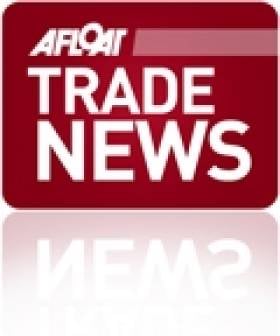Displaying items by tag: Sails
Ken Read to Become New President of North Sails
#sailmakers – American Volvo Ocean Race veteran and world champion sailor Ken Read will become president of North Sails Group in early January, 2013
Read will return to North Sails in the role of president and take over from current president Gary Weisman, who has served at the helm of the world's largest sailmaker for 16 years, and who plans to retire within the next 4 months.
"This is an important and exciting time in the world of sailing, sailmaking and in the history of North Sails," said North Technology Group CEO Tom Whidden. "We are absolutely thrilled to have Kenny back in the mix transitioning into the role of North's president."
"Gary has done an absolutely fantastic job and he will be missed dearly by not only me, but all North Sails employees who have gotten to know him so well during his 39-year career at North," Whidden continued. "Gary plans to stay involved with the company in the short-term and he and Kenny will work closely to make the transition as seamless as possible."
Read started working for North Sails in 1996, yet has taken four sabbaticals to participate in some of sailing's elite events. He was the CEO of PUMA Ocean Racing and skippered PUMA's Mar Mostro during the 2011-12 Volvo Ocean Race (VOR) and il mostro in the 2008-09 edition of what is known as the "world's toughest sailboat race." Prior to the Volvo Race, Read skippered two America's Cup teams for Dennis Conner on Stars & Stripes in 2000 and 2003.
"Sailing has been my lifeblood since I was very young and it's such an honor to return to what I consider the marine industry's top brand" said Read, who has been involved with the sailmaking industry for 29 years. "My number one goal is to continue to build on the success of North Sails, which includes helping to educate sailors about the technology behind every North sail that is designed and delivered," continued Read, who will be based in Newport, RI. "But I also want to help the sport of sailing grow here in the United States. After sailing around the world twice, I have visited dozens of countries where sailing is huge. In Europe, the South Pacific, South America, and even the Far East, sailing is equivalent to football and baseball here in the U.S. and I will work hard to help make our sport more visible so everyone in the sailing industry can benefit," he said. "I look forward to getting back into the business of selling and developing North Sails products. I've been the largest North Sails customer in North America for the past six years so I have a unique perspective on how North Sails works from the inside and outside, and where there are possibilities for improvement."
Gary Weisman, who started working for North Sails in 1974, has bittersweet emotions about stepping down as president. "A part of me is really sad to leave this company that has allowed me to sail with some amazing people and be part of building what is now the biggest and most technologically advanced sailmaking company in the world," Weisman said. "But another part of me is excited to hand over the reins to a very capable and well-known sailmaker and sailor - Ken Read - who I know will do a remarkable job. When I look back on my years here at North, I have some great memories and will always be thankful to Lowell North who hired me nearly 39 years ago and to Terry Kohler who invested in all of us and helped grow North Sails to what it is today," Weisman concluded.
Boat Jumbles for Dun Laoghaire, Howth and Carrickfergus
If you fancy a rummage through a Bosun's locker then boat Jumble sales on three consecutive weekends and at three separate locations will satisfy all bargain hunters when the Irish boating season kicks off in a fortnight's time.
Each show is offering a range of boating, sailing and water sports equipment and accessories. There are new and used pitches and some familiar trade names in addition to second hand boats/dinghies and nautical “car boot” items.
The first opens on March 27th – the weekend when the clocks go forward – and it takes place on the Carlisle Pier in Dun Laoghaire Harbour from 10am to 4pm.
The next is across Dublin Bay when the RNLI stage a boat jumble at Howth Yacht Club on Saturday 2nd April from 10.30am to 1.30pm.
The last show is at Carrickfergus on Belfast Lough and this 'Irish Boat Jumble' is being promoted as the 'biggest' in Ireland. The Antrim show will be on Sunday 10th April starting at 10am.
All are offering economical rates and friends are being encouraged to team up and pool their surplus gear and share the selling task!






























































